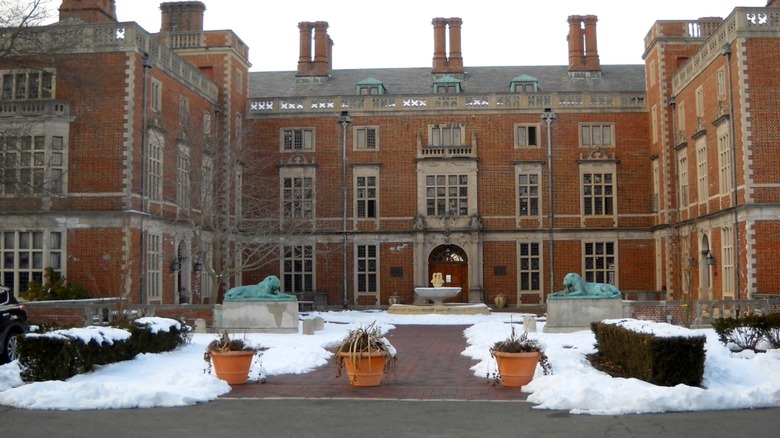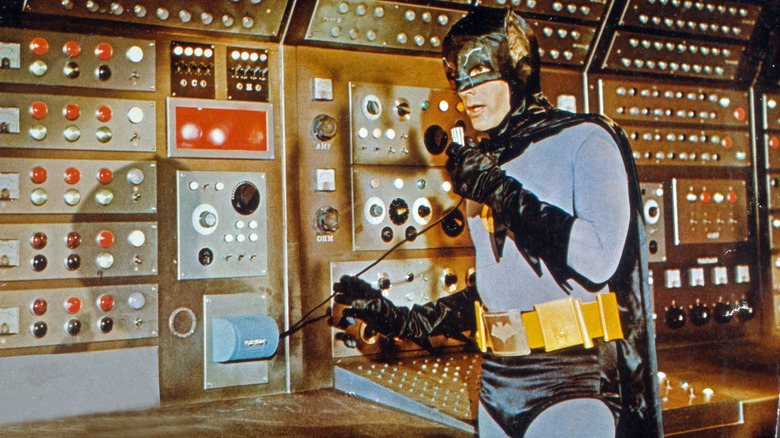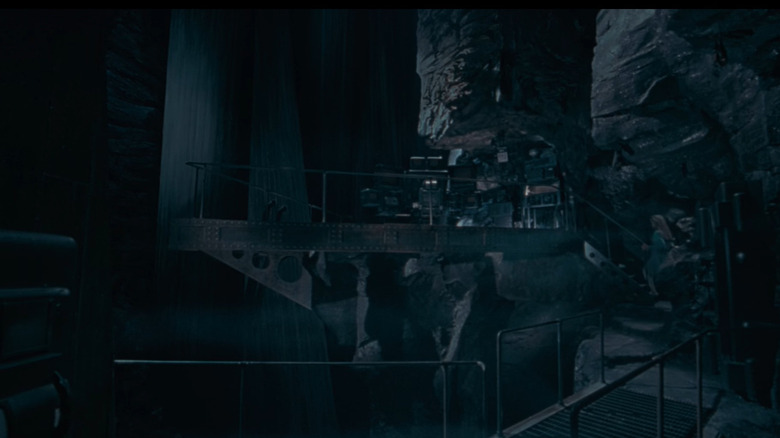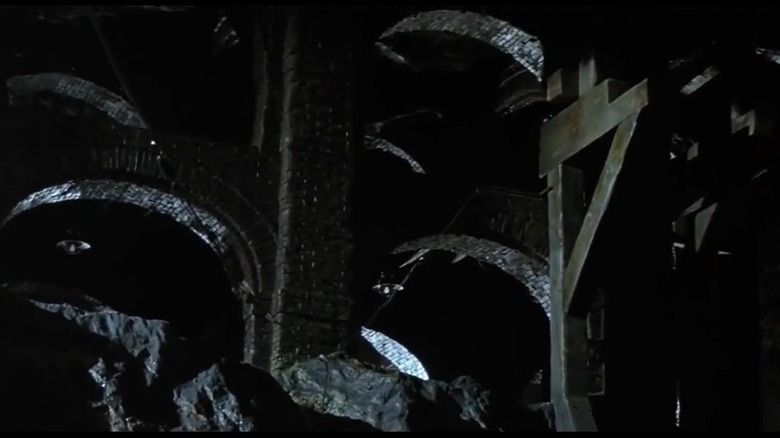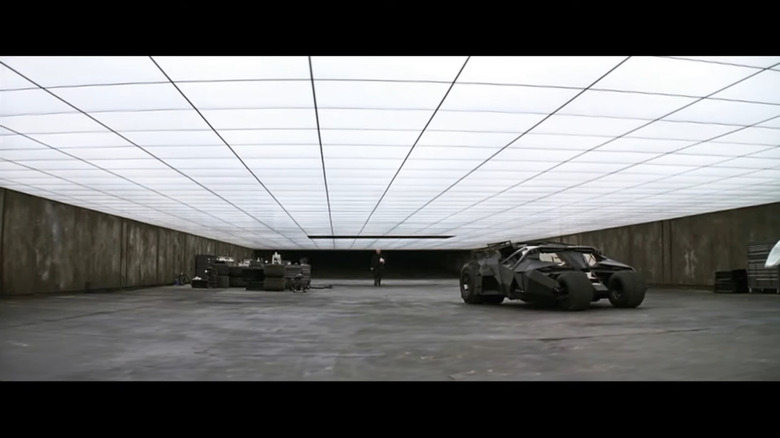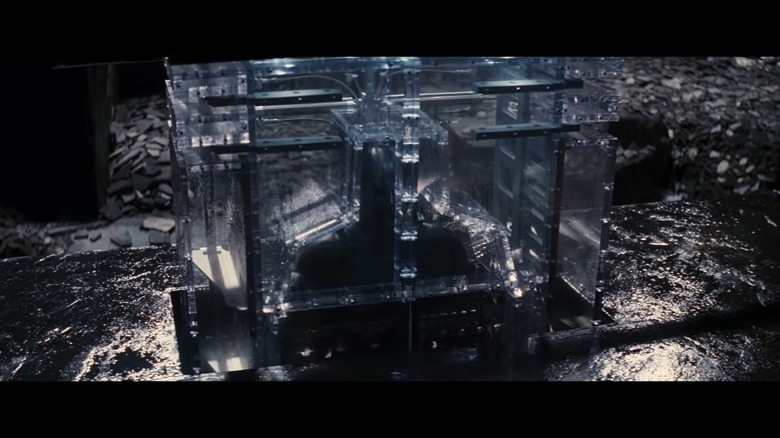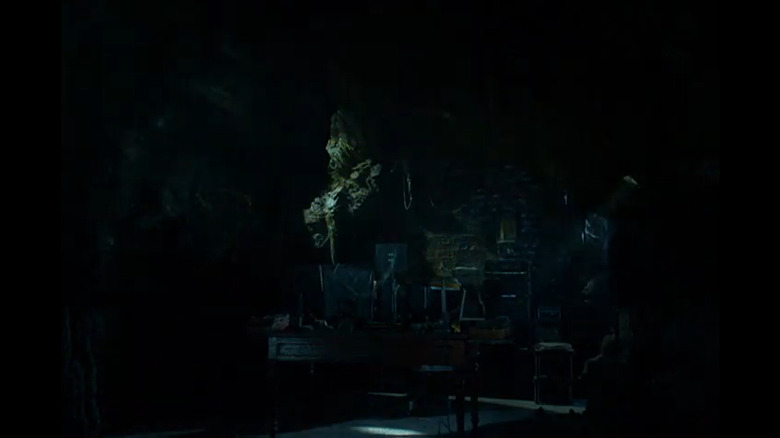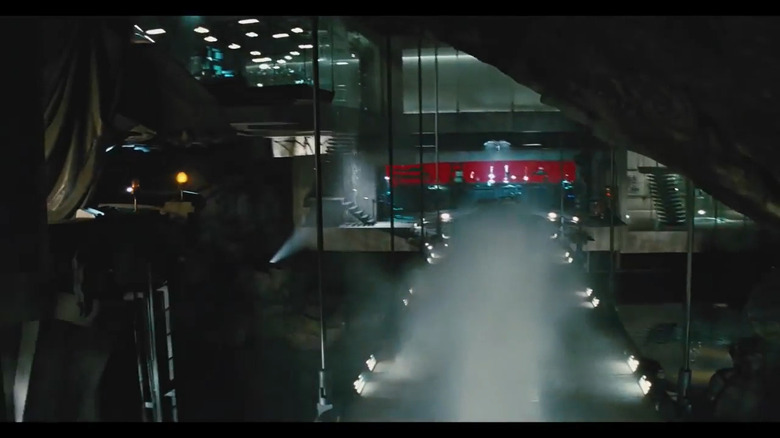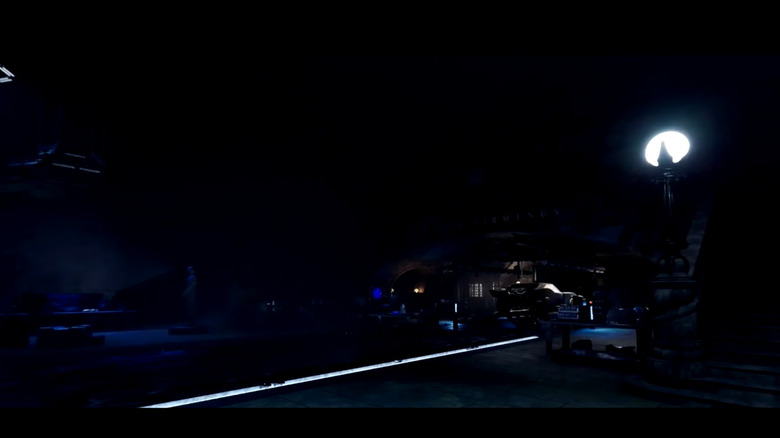The Home Design History Of The Batcave
In May 1939, the world of DC Comics was changed forever when they introduced billionaire socialite Bruce Wayne and his gritty vigilante alter ego Batman and his beloved hometown of Gotham City to the fictional universe. Since then, there have been countless iterations of movies, television shows, video games, comics, and spin-offs following the troubled hero. Multiple elements of Batman's mythos have securely sunk themselves into our own cultural psyche, such as the Batmobile, the famous cape and cowl, the heroes, villains, sidekicks, and love interests that surround Bruce Wayne, and, of course, Wayne Manor.
Wayne Manor, left solely to a young Bruce after the death of his parents, has become one of the most iconic elements of the DC Comics series. It is often used to relay a lot about Bruce's personality and psychological state, such as the heightened sense of past and isolation in Fox's "Gotham" or the uncanny cleanliness of the Batcave in Christopher Nolan's "The Dark Knight."
Wayne Manor and the Batcave have a long legacy in superhero and cultural discourse and are some of the most important aspects of telling a Batman story. The history of Wayne Manor and the Batcave is long, having originally shown up in the first 1939 edition of the story, and fascinating from both a cultural and architectural standpoint.
Adam West's futuristic Batcave
The first time Batman made the leap from comic book character to the live-action scene was in 1966 with the advent of ABC's "Batman" television series starring Adam West as the titular hero, which kicked off in January 1966. A few months later, West's Batman joined the ranks of movie heroes with the film "Batman," directed by Leslie H. Martinson, coming out in late July of 1966. While West's Batman and his gadgetry lacked the sophistication of modern-day Batmans, it was certainly a sight to see on screens for the first time.
This initial portrayal of the Batcave is less high-tech than the newer adaptations, says Architectural Digest, but it is certainly unique and distinctive. This first Batcave was accessed by removing the head of a William Shakespeare statue, revealing a switch that would allow him to access the high-tech tools of the caped vigilante through a bookcase (via CBR).
This premier Batcave is covered in high-tech (for the '60s) tools and machines, lit-up buttons lining rows of aluminum contraptions in a stony cave. There was a definite sense of futurism, though maybe not entirely in the retro-futuristic art movement sense of the world. Instead of being so brutalist and serious, like the popular aesthetics of "Star Trek" (also debuting in 1966), it was instead bright, fun, and didn't take itself so seriously.
Tim Burton's dark and dreary Batcave
Batman returns to the big screen in 1989 with "Batman," and again in 1992 with "Batman Returns," this time under the direction of Tim Burton. Where the original Batman was a little silly, colorful, and campy, Burton brought his signature demure tone to his rendition. Michael Keaton dons the cape and cowl as the new broody billionaire slash masked vigilante, and both he and his Batcave are a lot darker both metaphorically, seeing Jack Nicholson take on the role of the Joker and literally, with the hero's headquarters being much more dimly lit and sparsely decorated.
Architectural Digest labels this Batcave as less imaginative and very clearly industrial. The entrance of the Batcave, located again in an underground cave where the Batmobile rests in between uses, is suspended hundreds of feet above the ground. The stark, brutalist room is surrounded by rough cave stone and smoother pillars and populated by hundreds of bats.
Burton's darker, more gritty, and realistic representation of the Batcave paved the way for later directors to experiment. Batman is undeniably haunted by the ghosts of his past; OptimistMinds going through the history of his (likely) PTSD and depression after witnessing the death of his parents. The movement towards a darker, sleeker, and more brutalist Batcave not only shows his technological progression but his psychological descent as well.
"Batman Begins" in a bat-infested cave
Christopher Nolan takes on the responsibility of designing the Batcave in 2005 with the production of "Batman Begins." Bruce Wayne, played by Christian Bale, trains with the infamous Ra's Al-Ghul to avenge his parents' deaths but finds his hometown of Gotham City in need of a protector. With the help of his butler Alfred Pennyworth, played by Michael Cane, and Wayne Enterprises associated Lucius Fox, played by Morgan Freeman, Wayne transforms into the infamous masked vigilante.
Wayne makes his Batcave in, well, a bat-infested cave under Wayne Manor. Alfred tells him Wayne Manor was a part of the underground railroad, and he suspects that the structural remnants not damaged by flowing water and time used to be sleeping quarters for that very purpose.
This Batcave is haphazard and truly one of the most cave-like atmospheres of all the on-screen Batman adaptations. Any archeological features are leftover from an ancient memory of Wayne Manor and is overtaken by waterfalls and stagnant lakes. One element present in this adaptation, though, is the Batsuit, which CBR says is always hidden and displayed in the Batcave for privacy.
"The Dark Knight" modern brutalistic Batcave
Spoiler alert for newer Batman fans, as the disappearance of the Batcave, may come as a shock. Ra's Al-Ghul, Bruce Wayne's mentor, comes to Gotham City at the end of "Batman Begins" and burns down Wayne Manor. Christopher Nolan continues his interpretation of Batman, though, in the 2008 hit film "The Dark Knight."
With Wayne Manor out of commission, Bruce and Alfred relocate to a luxurious penthouse overlooking Gotham City. Just because the Batcave is under construction doesn't mean Batman is, though. Batman operations are held in an underground bunker located on a private, isolated property owned by Wayne Enterprises, only accessible by Wayne and Alfred.
This bunker is the epitome of sleek, modern brutalism, an architectural style coming out of England in the 1950s through 1970s, according to The Spruce, which involves a heavy, utilitarian feel marked by raw concrete, unfinished surfaces, and materials like steel and stone. All that is in this Batcave is the Batmobile, various gadgets and tools, and an array of computer screens used to monitor the goings-on in Gotham.
The Batcave returns in "The Dark Knight Rises"
Bruce Wayne leaves Gotham for eight years following the events of "The Dark Knight," returning to screens in the final film of Nolan's trilogy, "The Dark Knight Rises," in 2012. Wayne Manor and the Batcave have been left under the care of Alfred, and though Batman had been retired in Wayne's absence, the space has been thoroughly modernized. Architectural Digest compliments the space's use of technology, praising it for its functional and smoothly incorporated design as opposed to the boxy, button-filled machines of Batman's past.
Some features of this new and improved Batcave include a supercomputer raised on a steel platform, which we first see Bruce use to look up the newly introduced Catwoman, or Selina Kyle, played by the one and only Anne Hathaway. The next time we see the Batcave is as Bruce learns about the film's villain, Bane, played by Tom Hardy. Bruce walks into a lake in the Batcave, and a black marble platform ascends multiple feet in the air. From this platform, a new and improved Batsuit emerges from the ground, encased in glass. Though it is not as sleek as the makeshift Batcave of "The Dark Knight," this is Nolan's most sophisticated actual Batcave.
Origins of the Batcave in "Gotham"
The story of Batman returns to television in 2014 with Fox's show "Gotham." This five-season show follows the origin of not only Batman but the lore of Gotham itself. The first episode begins with the death of Martha and Thomas Wayne in front of a young Bruce, played by David Mazouz. The following seasons show the origins of infamous villains like the Penguin, the Riddler, Poison Ivy, and the Scarecrow, as well as a very unique take on the Joker's elusive origin. It also follows the development of less villainous characters, such as Jim Gordon's days before being commissioner.
As such, we also get to see the development of Batman lore, like the Batsuit, Batmobile, his tools and gadgets, and, of course, the Batcave. In season 2, Bruce and Alfred discover a hidden passageway behind the fireplace, which leads to a sealed shut door. After exploding it, the duo finds a hidden office in a cave belonging to Thomas Wayne. While the space is danky and covered in cobwebs, it has a very unique look, decorated in Wayne opulence with ornate desks, an antique banker's lamp, and large and plush leather chairs. There is also a computer filled with secrets about Wayne Enterprises, a jumping-off point for the soon-to-be defender of Gotham. Production designer Doug Kraner told The Guardian he wanted a blend of old-world Gotham charm with new and fresh modern aesthetics, fitting in perfectly with the young hero's journey.
Sleek and stylish Batcave in "Batman v Superman: Dawn of Justice"
Ben Affleck dons the cape and the cowl in 2016 with Zack Snyder's "Batman v Superman: Dawn of Justice." While the film had mixed reception, sporting a dismal 29% on Rotten Tomatoes, it certainly has one of the more unique Batcave designs. The Batcave is accessed by an opening vault in a body of water, and as Batman exits the Batmobile, we see a much more modern and technology-focused design, somewhat in the style of Adam West's Batcave, though much sleeker.
Architectural Digest identifies this Batcave design with a brutalist architectural flare, sporting cement walls and raised cement platforms dangling above the depths of the cave below. While it is certainly brutalist, it is also much more modern than other renditions, with futuristic blue lights, glass walls, and unique gadgetry. While it may not be the most beloved rendition of the Batman comics, it is definitely a stand-out in terms of design.
A new take on the Batcave in Matt Reeves' "The Batman"
In 2022, "Twilight" superstar Robert Pattinson took on the role of Batman in a gritty, noir-inspired take on the hero's story. Directed by Matt Reeves, this rendition of the comic book tale focuses on the relationship between Batman and Catwoman, played by Zoe Kravitz, and his attempt to take down the infamous Riddler, played by Paul Dano, and the Penguin, played by Colin Farrell.
While the Batcave has almost always been located under Wayne Manor, Reeves decided to let the lore take on a new life, with Architectural Digest stating this Batcave is located in an abandoned train station. It still has the classic, dingy and dark look of Batcaves past, but with a sleeker and almost more fantastical feel. All of Batman's classic gadgetry resides in this station, with more classic Gotham architectural features like limestone stairs, stone bricks, and Beaux-Arts style architecture. This contrasts wonderfully with the high-tech computers and technology of a new decade of Batman.
